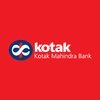
i
National Australia
Bank
Filter interviews by
National Australia Bank Senior Analyst Interview Questions and Answers
National Australia Bank Senior Analyst Interview Experiences
1 interview found
I applied via Referral and was interviewed before Apr 2023. There were 3 interview rounds.
3 easy to medium questions mostly on arrays
(1 Question)
- Q1. Questions about last role
(1 Question)
- Q1. Intro of the nab india
- Ans.
NAB India is a financial institution that offers banking services in India.
NAB India is a subsidiary of National Australia Bank (NAB), one of the largest banks in Australia.
It provides a range of banking products and services such as savings accounts, loans, and investment options.
NAB India has a strong presence in major cities across India and aims to cater to the financial needs of individuals and businesses.
The bank...
Top trending discussions






Interview questions from similar companies

I appeared for an interview before Feb 2024.
(2 Questions)
- Q1. What is your current ctc
- Ans.
My current CTC is confidential and I would prefer not to disclose it.
I am not comfortable sharing my current CTC as it is confidential information.
I believe that discussing salary details should be done in a more appropriate setting, such as during negotiations or with HR.
I would prefer to focus on my qualifications and experience rather than my current salary.
- Q2. What is your current role
- Ans.
I am currently working as a Financial Analyst at a multinational corporation.
Analyzing financial data and trends to provide insights and recommendations
Preparing financial reports and forecasts
Assisting in budgeting and financial planning
Conducting variance analysis and performance tracking
Collaborating with other departments to support decision-making

General topics on current budget
(1 Question)
- Q1. What is your name
Interview Preparation Tips

I applied via Recruitment Consulltant and was interviewed in Aug 2024. There was 1 interview round.
(2 Questions)
- Q1. Why do you want to join us?
- Ans.
I am impressed by your company's reputation for innovative solutions and strong team collaboration.
I am drawn to your company's commitment to excellence in analytics
I am excited about the opportunity to work with a talented team of analysts
I believe my skills and experience align well with the challenges your company faces
- Q2. Where do you see yourself in five years?
- Ans.
In five years, I see myself as a senior analyst leading a team and making significant contributions to the company's growth.
Leading a team of analysts
Making significant contributions to company growth
Continuing professional development and learning new skills
Building strong relationships with colleagues and clients
Interview Preparation Tips

I applied via Referral and was interviewed in Aug 2023. There were 3 interview rounds.

(1 Question)
- Q1. Basic quaestions
(1 Question)
- Q1. SQL,Python,Puzzles
Interview Preparation Tips


30 minutes, numerical type
(2 Questions)
- Q1. Tell about yourself
- Ans.
Analytical thinker with a background in data analysis, passionate about turning data into actionable insights for business growth.
Educational background in Economics, focusing on data analysis and statistics.
Experience working as a data analyst at XYZ Corp, where I improved reporting efficiency by 30%.
Skilled in using tools like Excel, SQL, and Tableau to visualize data and present findings.
Strong problem-solving abili...
- Q2. Tell about your one achievement
- Ans.
Successfully led a data analysis project that improved operational efficiency by 20% within six months.
Identified key performance indicators (KPIs) that were underperforming.
Utilized advanced Excel functions and data visualization tools to analyze trends.
Collaborated with cross-functional teams to implement data-driven strategies.
Presented findings to senior management, leading to actionable insights.

I applied via Naukri.com and was interviewed before May 2021. There were 3 interview rounds.

(4 Questions)
- Q1. Nothing to say asked about roles
- Q2. Nothing to say just technicals
- Q3. If we are confident of what we done past
- Q4. Asked about all together
(1 Question)
- Q1. Asked about salary negotiable
Interview Preparation Tips

I applied via Campus Placement and was interviewed before May 2023. There was 1 interview round.
(1 Question)
- Q1. Why do you want to join axis bank?
Interview Preparation Tips

I applied via Walk-in and was interviewed in May 2022. There was 1 interview round.
(2 Questions)
- Q1. Assked ABOUT School achievement. Interest in sports extra curriculum activists wtc
- Q2. Current finance minister
- Ans.
The current finance minister of the country is Nirmala Sitharaman.
Nirmala Sitharaman became the finance minister in May 2019.
She is the first full-time female finance minister of India.
She has presented two Union Budgets so far, in 2019 and 2020.
She has also introduced several economic reforms and policies, such as the Corporate Tax Cut and the Atmanirbhar Bharat Abhiyan.
Interview Preparation Tips

- Q1. Power query how work
- Q2. How many joins
National Australia Bank Interview FAQs
Tell us how to improve this page.
National Australia Bank Interviews By Designations
- National Australia Bank Analyst Interview Questions
- National Australia Bank Data Analyst Interview Questions
- National Australia Bank Associate Vice President Interview Questions
- National Australia Bank Senior Analyst II Interview Questions
- National Australia Bank Associate Interview Questions
- National Australia Bank Solution Architect Interview Questions
- National Australia Bank Software Developer Interview Questions
- National Australia Bank Financial Analyst Interview Questions
- Show more
Interview Questions for Popular Designations
Overall Interview Experience Rating
based on 2 interview experiences
Difficulty level
Duration
Senior Analyst Interview Questions from Similar Companies
National Australia Bank Senior Analyst Reviews and Ratings
based on 17 reviews
Rating in categories
|
Analyst
258
salaries
| ₹8 L/yr - ₹14.7 L/yr |
|
Senior Analyst
212
salaries
| ₹11.6 L/yr - ₹22 L/yr |
|
Associate Vice President
156
salaries
| ₹22.5 L/yr - ₹37 L/yr |
|
Senior Associate
144
salaries
| ₹5 L/yr - ₹10.9 L/yr |
|
Analyst 1
136
salaries
| ₹6.5 L/yr - ₹13.4 L/yr |

HDFC Bank

ICICI Bank

Axis Bank

Kotak Mahindra Bank
- Home >
- Interviews >
- National Australia Bank Interview Questions















